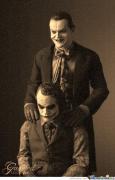I appreciate you and JCN saying so. I may be "back lite-ish", but I'm not back with the same level of involvement I had before. I just don't have the time or energy to do so. I seriously do appreciate it, though, and value the time and energy I did put into the forums before.





 Reply With Quote
Reply With Quote



